MATTERS OF OBSESSION
A new foundation that aims to change the way we engage with art
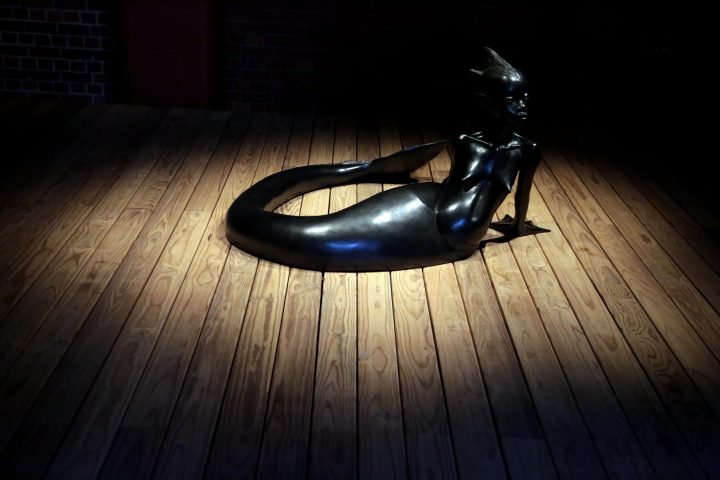
The recently launched Johannesburg Contemporary Art Foundation is looking to find new ways to engage with art in the ‘Global South’.
“We looked at a network of institutions, scholars and relationships in the Global South, and we asked ourselves, off the back of the decolonisation movement, what does the scholarship, thinking and creativity emerging in the Global South look like? And who is narrating that story? Because although our artists exhibit around the world, curators in Europe and America are still writing our narratives. They are still the authorities over the catalogues in the interpretive space.
“We need to have a balance institutionally between institutions in the South and the North. That was part of our motivation to curate the show in the South, for an audience in South Africa, in Africa, in the South,” says Clive Kellner, executive director of the Johannesburg Contemporary Art Foundation (JCAF).
Opened at the beginning of 2020 with a lecture by New York University’s Goddard Professor in Media, Culture and Communications, Arjun Appadurai, and after 10 years of planning, the physical home of the JCAF is in Johannesburg’s Forest Town. Its location is a heritage site that was once an electrical tram shed, part of a network of trams that ran between 1906 and 1961.
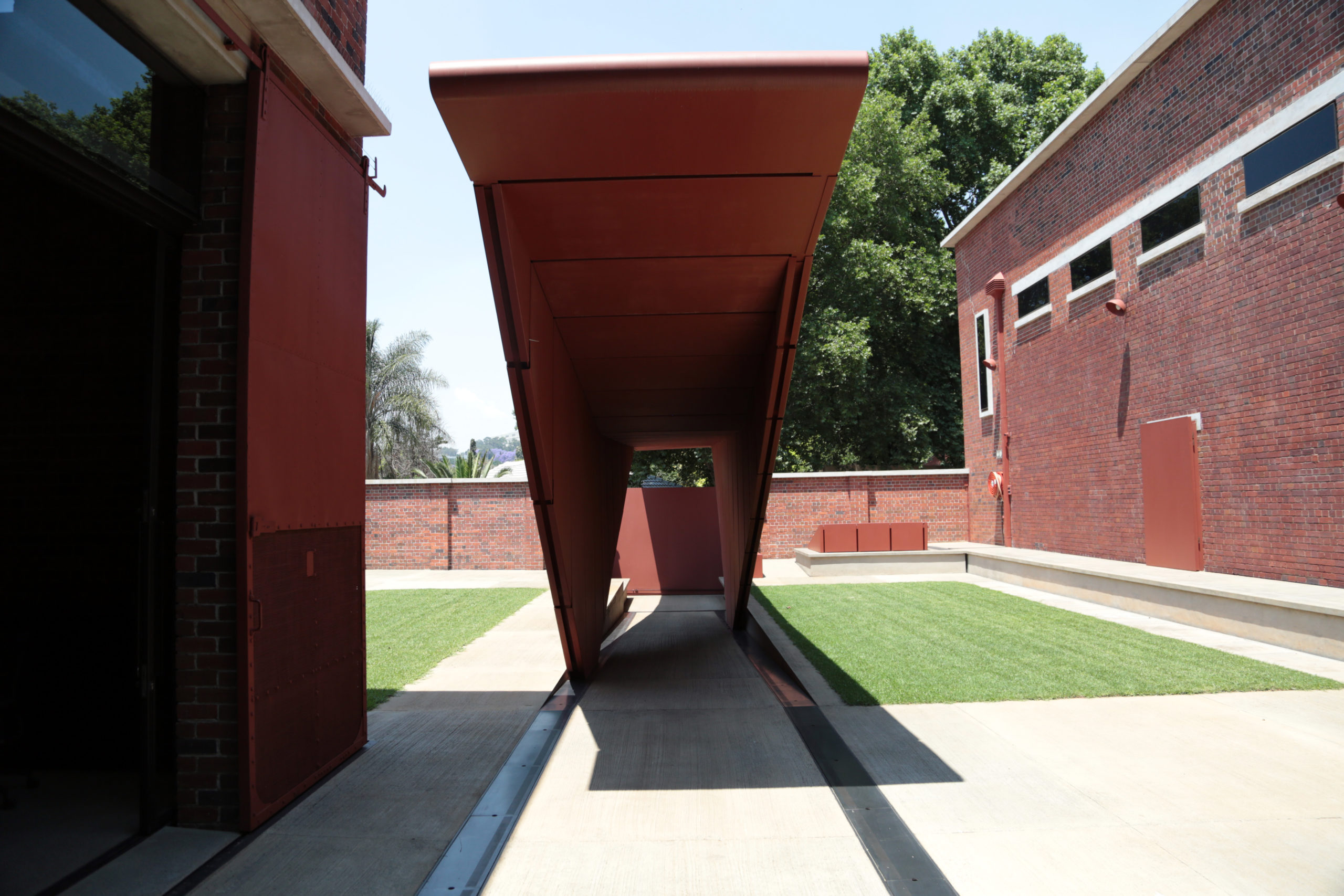
JCAF’s steel entrance which sits along the old tram lines and honours its memory. Photo:Felix Dlangamandla/Daily Maverick
“We spent three years renovating it, and basically keeping the integrity of the site,” says Kellner.
“We wanted to look at women and their contribution to art, as recognised artists of stature who are accomplished capable intellectuals to be recognised for their contribution to society as equals”
The inaugural exhibition is titled Contemporary Female Identities in the Global South. It was initially planned to open in March, but this was postponed because of Covid-19, and it eventually opened to the public on 16 September, running until 30 January 2021.
The collection of work on show is significant not only because of the striking individual pieces, but also because of its thematic significance in the choice of the five artists, all contemporary female artists. On display are the works of Bharti Kher (India, UK), Wangechi Mutu (Kenya, US), Nandipha Mntambo (South Africa), Shirin Neshat (Iran, USA) and Berni Searle (South Africa), whose work is explored in various mediums, from photography to video and sculpture.
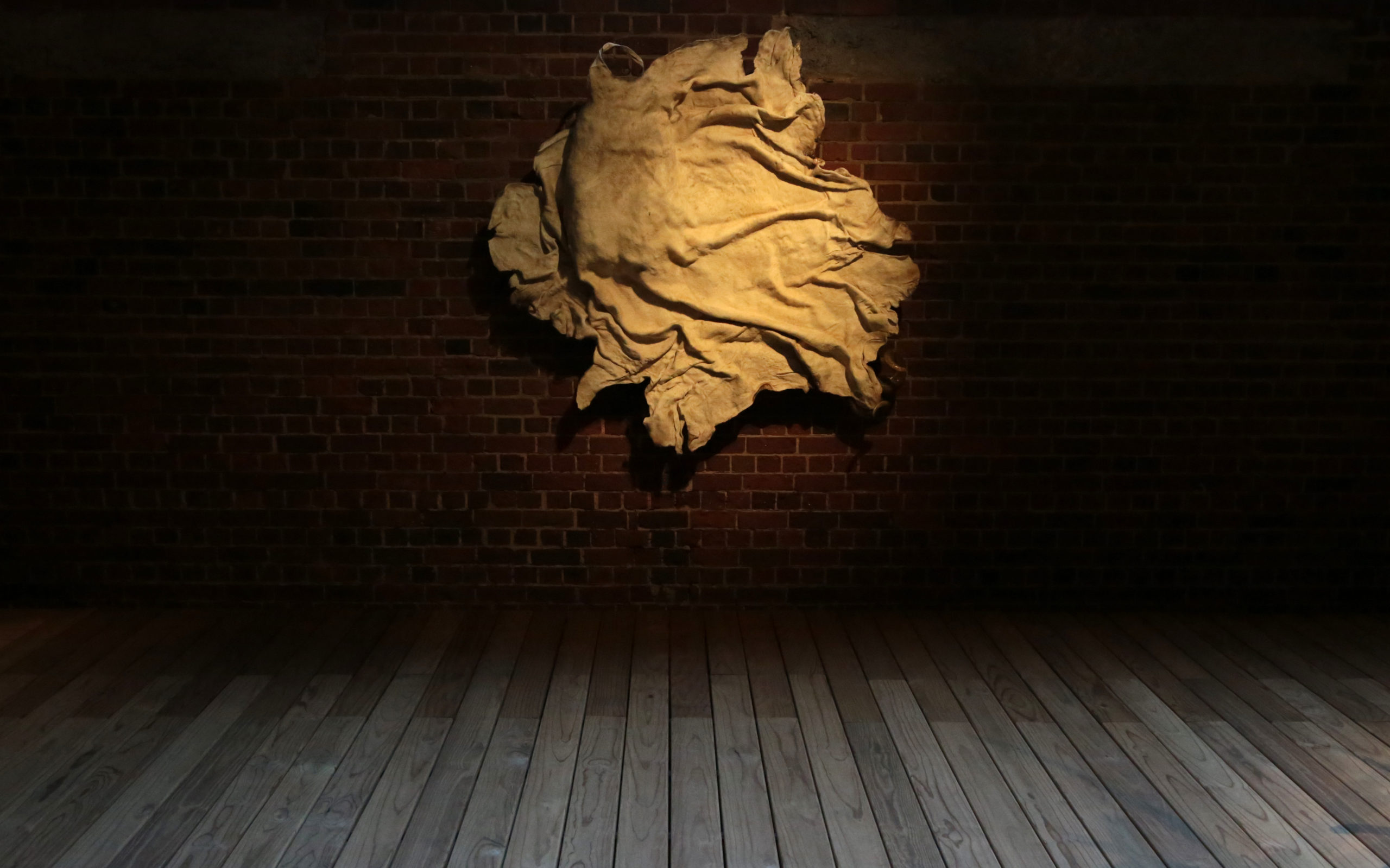
Nandipha Mntambo, What Remains (2019). Photo:Felix Dlangamandla/Daily Maverick
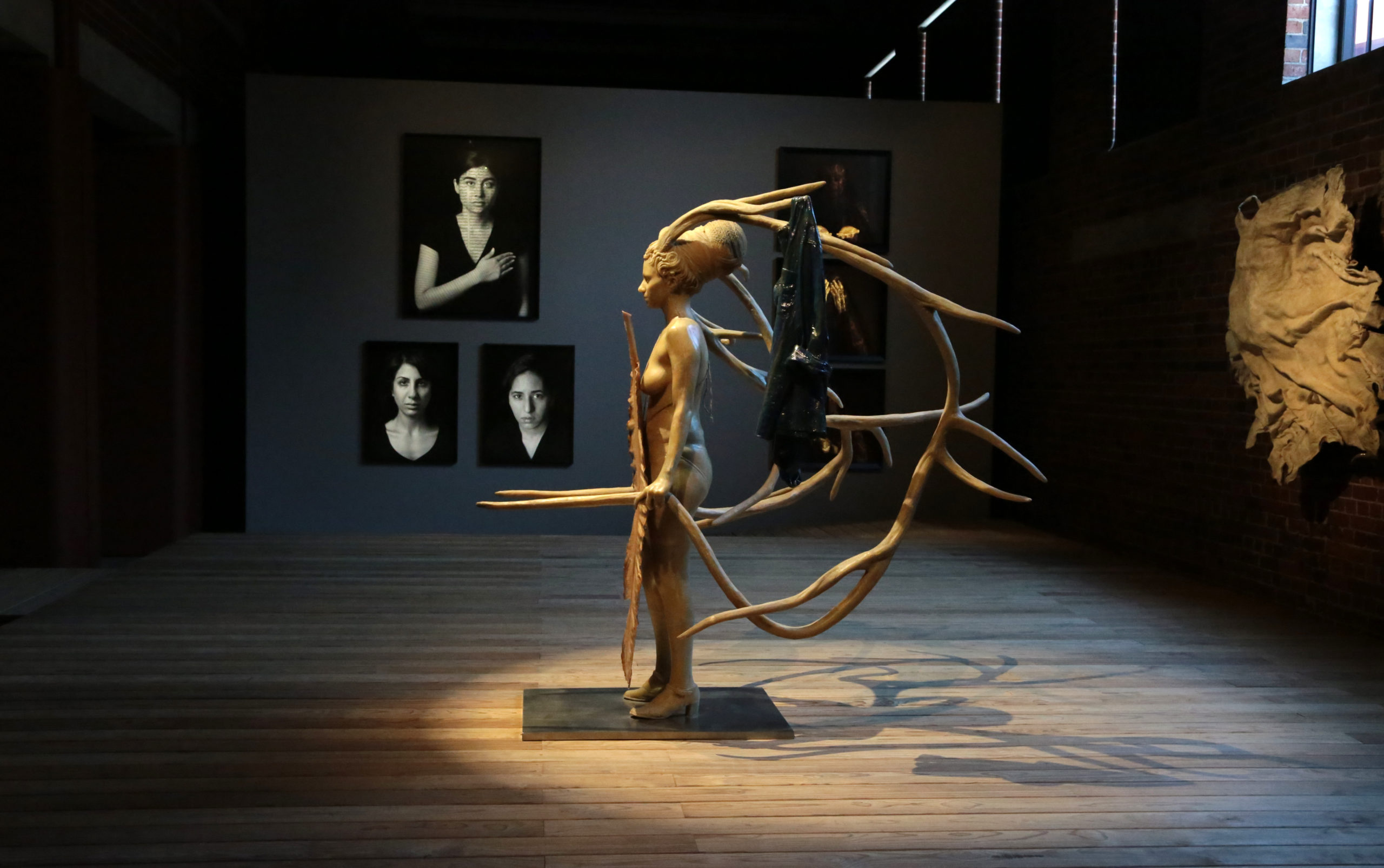
Installation view including Bharti Kher, Warrior with cloak and shield (2008); Shirin Neshat, Nida (Patriots), Sheida Jafari (Masses) and Sheida Dayani (Masses), from The Book of Kings series (2012); Berni Searle, Lament I, IV, VI (2011); and Nandipha Mntambo, What Remains (2019). Photo:Felix Dlangamandla/Daily Maverick
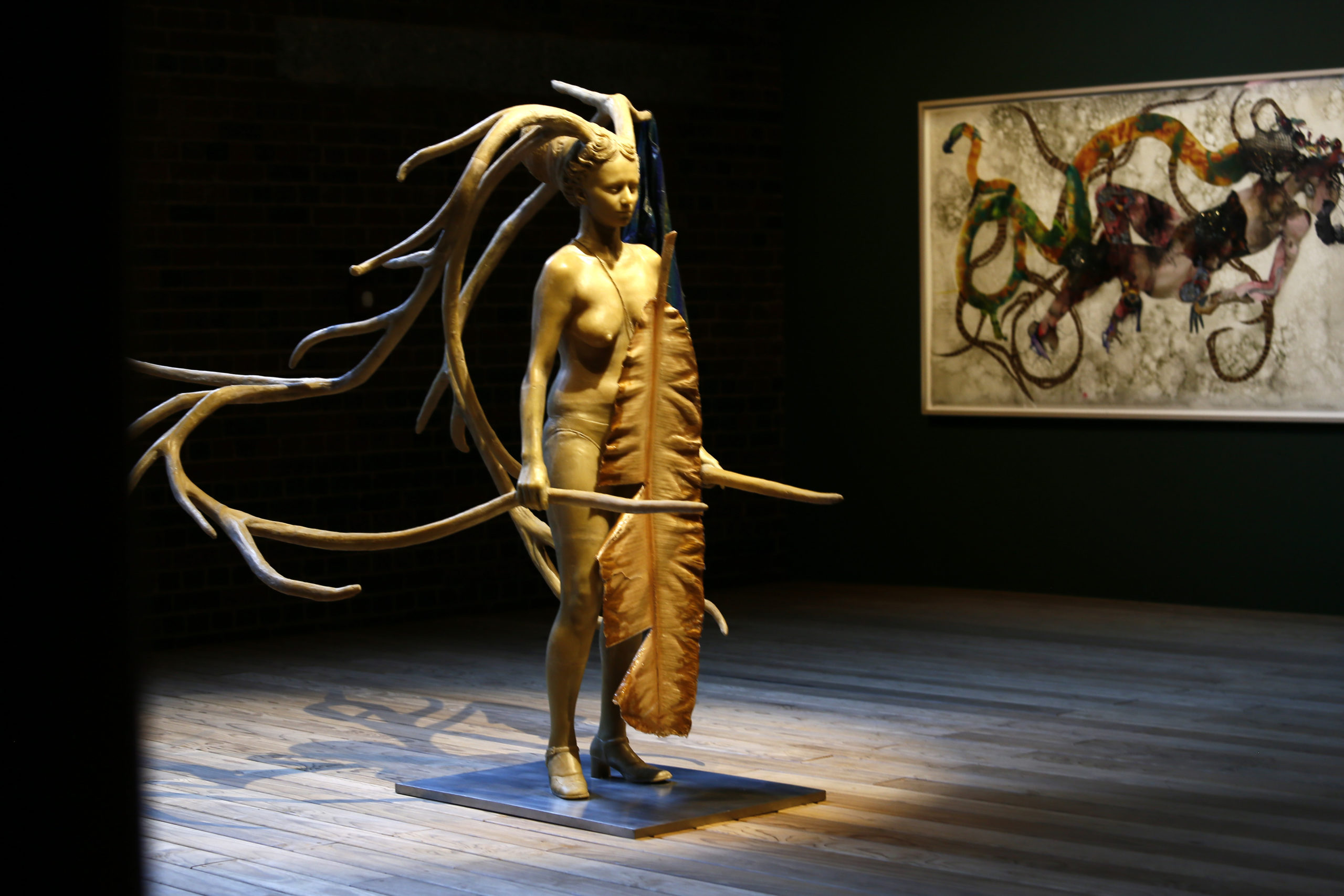
A Dragon Kiss Always Ends in Ashes (2007). Photo:Felix Dlangamandla/Daily Maverick
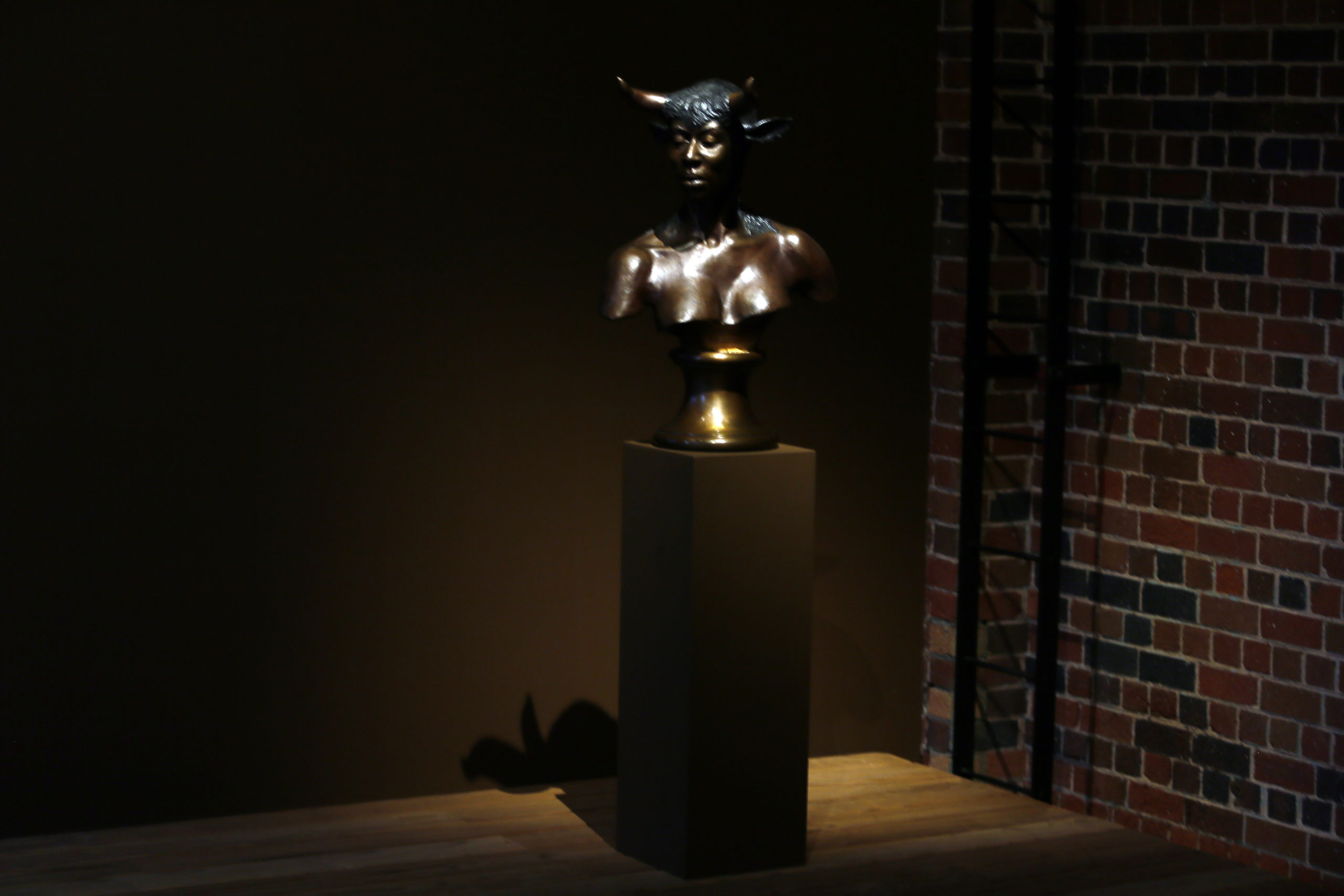
Nandipha Mntambo, Sengifikile (2009). Photo:Felix Dlangamandla/Daily Maverick
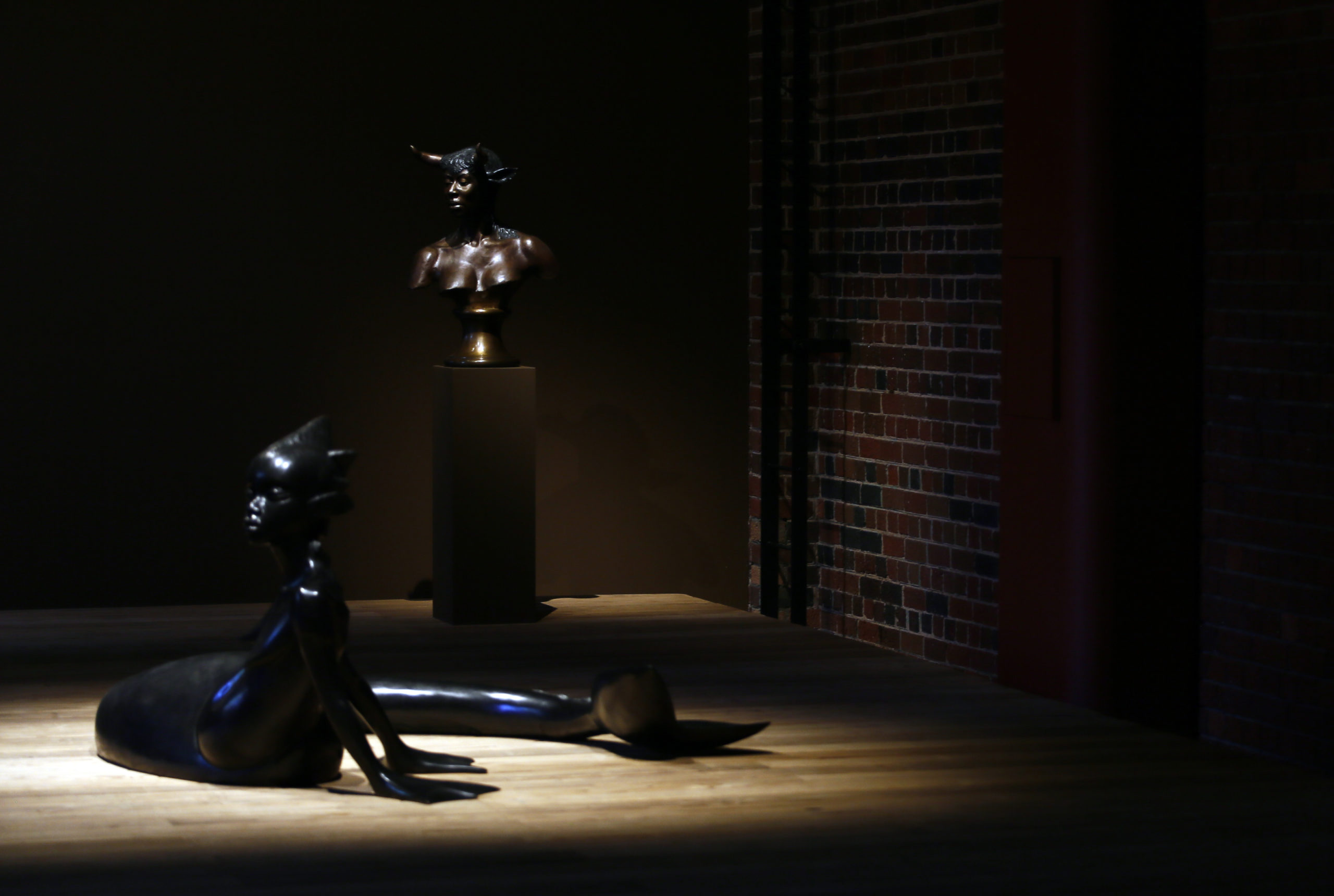
Installation view including Wangechi Mutu, Water Woman (2017), and Nandipha Mntambo, Sengifikile (2009) .Photo:Felix Dlangamandla/Daily Maverick
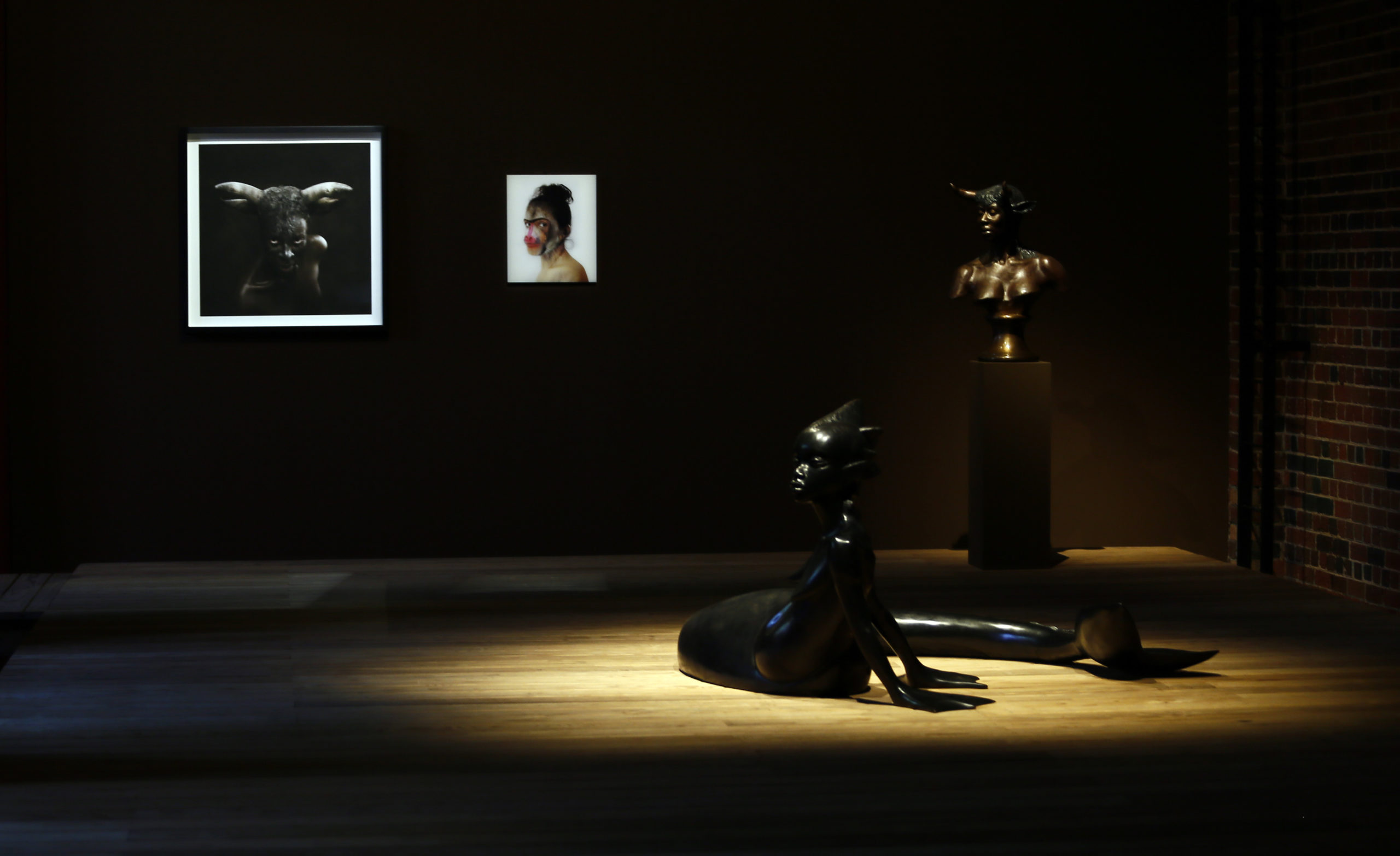
Installation view including Nandipha Mntambo, Europa (2008); Bharti Kher, Self portrait (2007); Nandipha Mntambo, Sengifikile (2009); and Wangechi Mutu, Water Woman (2017). Photo:Felix Dlangamandla/Daily Maverick
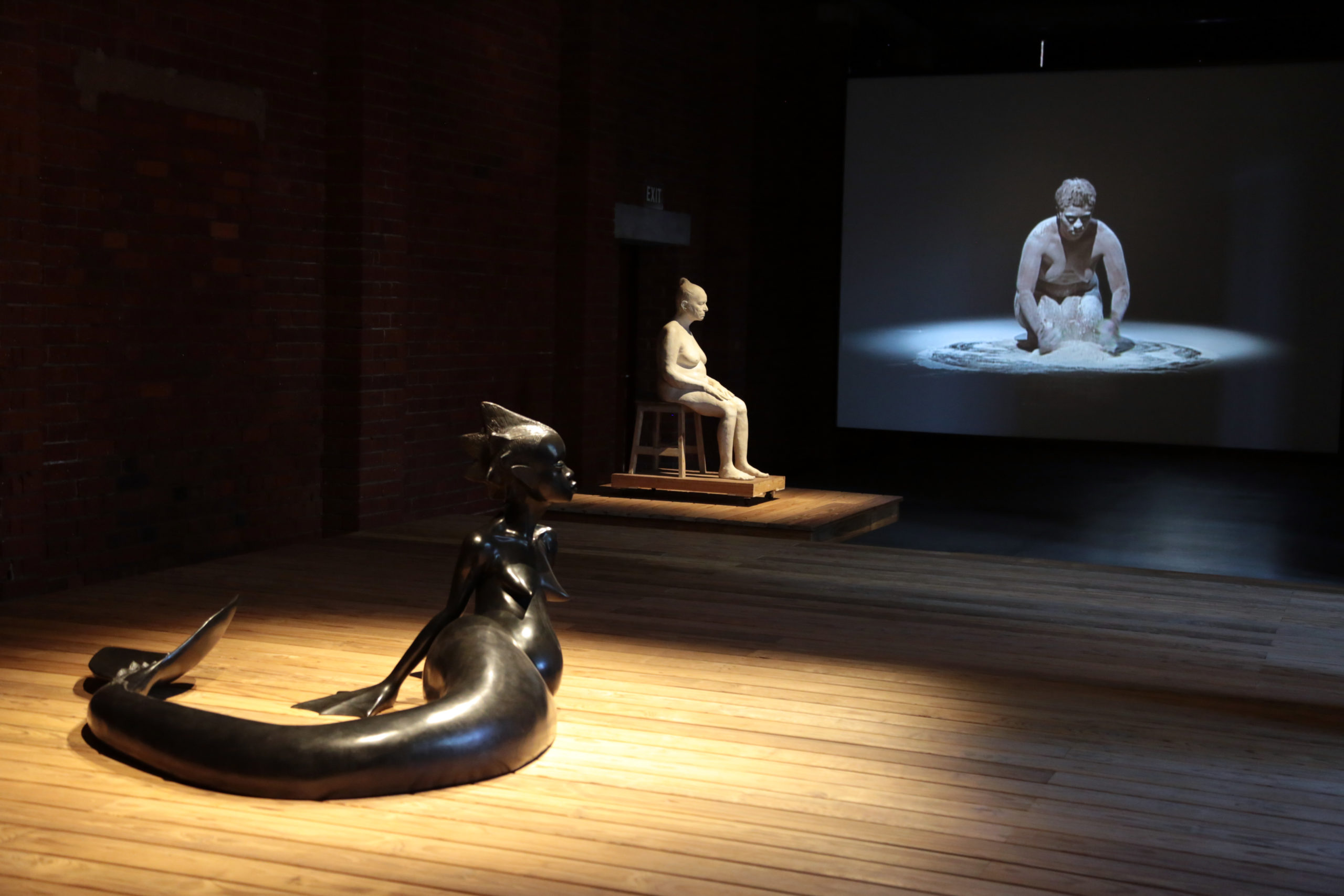
Installation view including Wangechi Mutu, Water Woman (2017); Bharti Kher, Mother (2016); and Berni Searle, Snow White (2001). Photo:Felix Dlangamandla/Daily Maverick
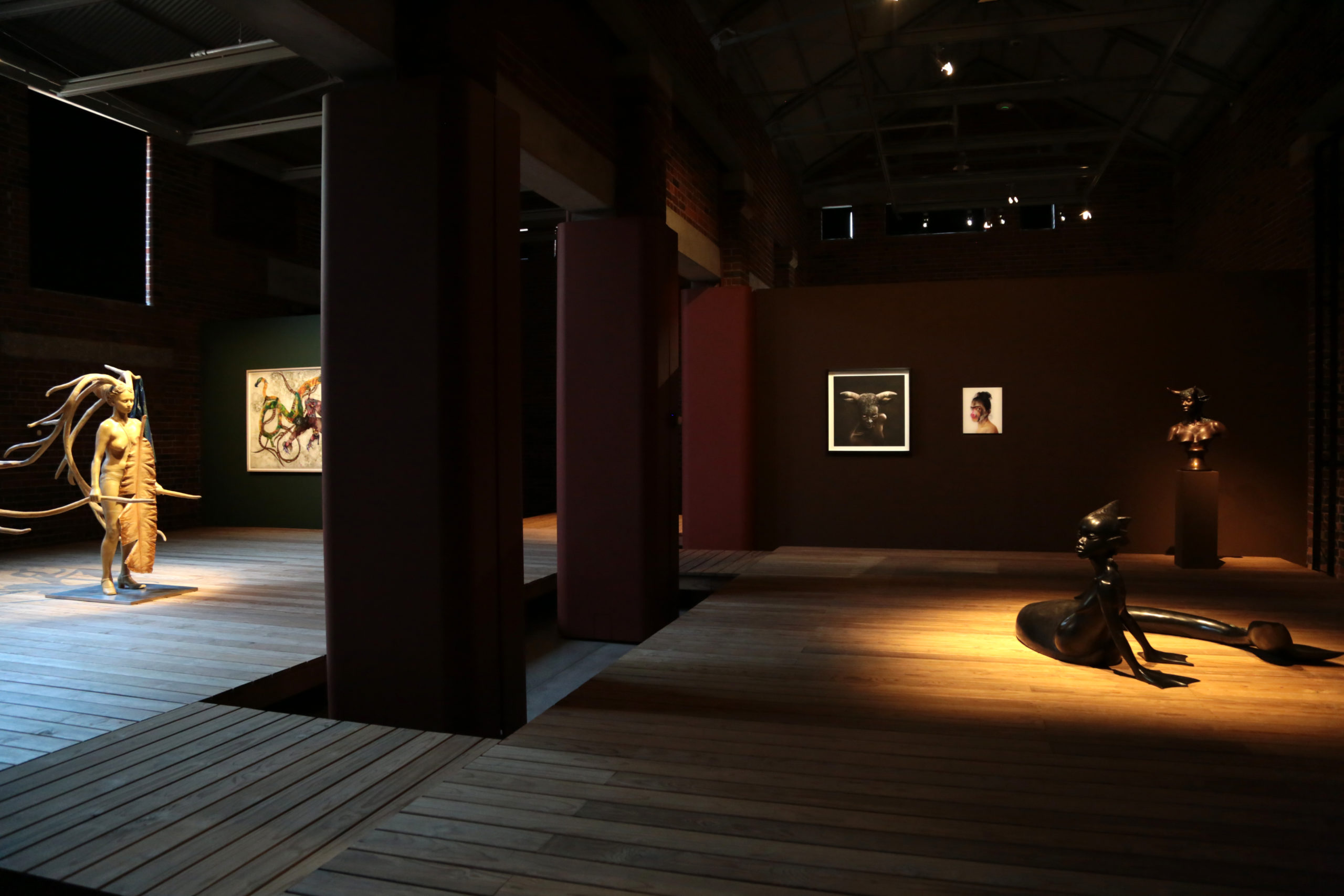
Installation view including Bharti Kher, Warrior with cloak and shield (2008); Wangechi Mutu, A Dragon Kiss Always Ends in Ashes (2007); Nandipha Mntambo, Europa (2008); Bharti Kher, Self portrait (2007); Nandipha Mntambo, Sengifikile (2009); and Wangechi Mutu, Water Woman (2017). Photo:Felix Dlangamandla/Daily Maverick
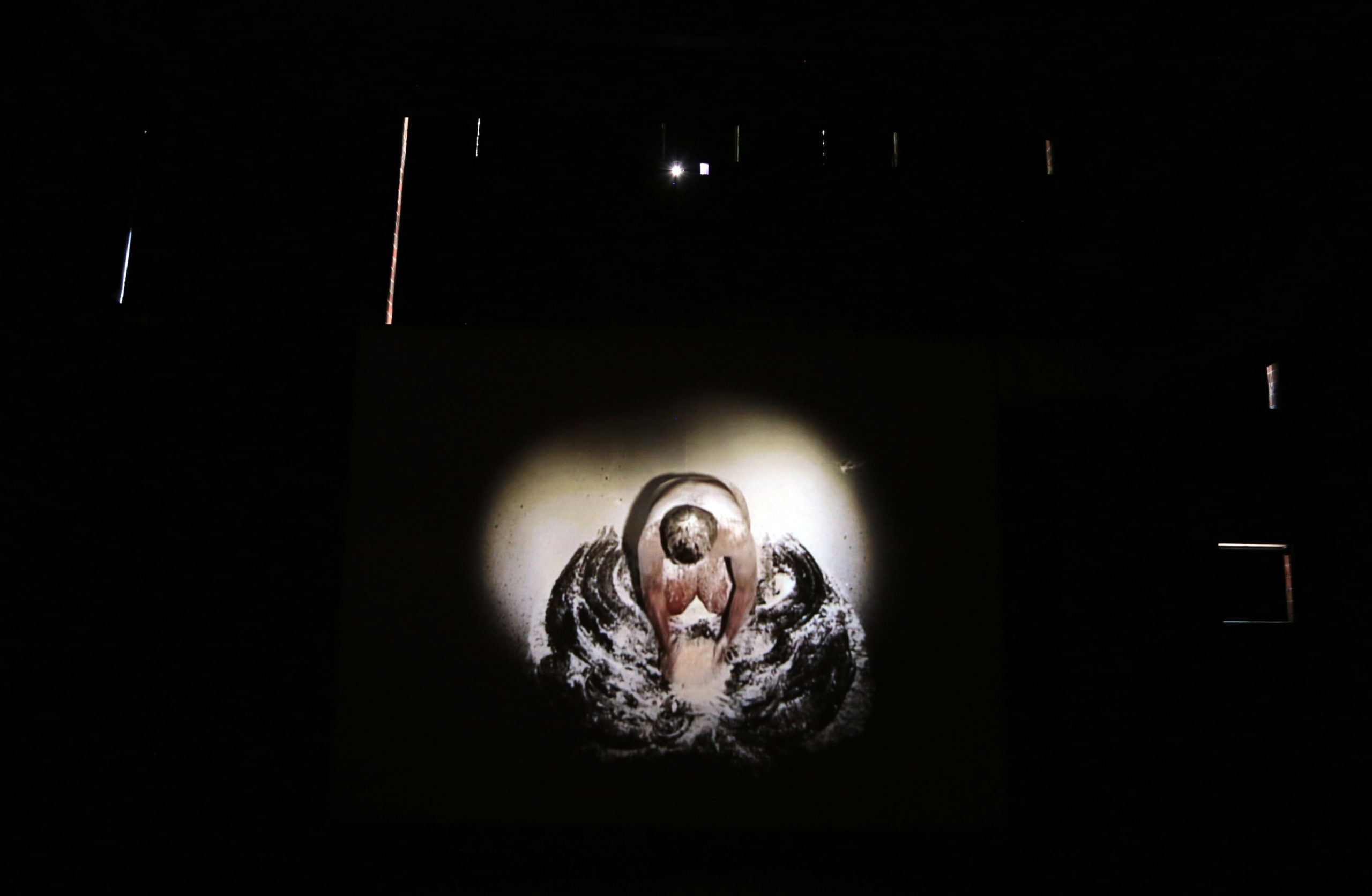
Berni Searle, Snow White (2001), Photo:Felix Dlangamandla/Daily Maverick
It is the first of three exhibitions which will be shown over three years. All three are curated under the theme Female Identities in the Global South.
“One of the most critical issues in our world today is gender-based violence, and the rights and equality of women in society. We didn’t take an activist position on the subject, we wanted to look at women and their contribution to art, as recognised artists of stature who are accomplished capable intellectuals to be recognised for their contribution to society as equals,” says Kellner.
Beyond the themes and the artwork on show, a key of the foundation is engagement.
“Most mainstream museums have what is called footfall, they want to get large numbers of visitors through the door. But when you dig a little deeper – and it’s become a problem with big museums – it’s become a spectacular culture.
“The Tate Modern, for example, has five million visitors. How many of them are locals? I think you’ll find that the majority of them are tourists, people with the means to travel,” says Kellner.
While it doesn’t reveal the split between local visitors and tourists, in 2019 the UK’s Association of Leading Visitor Attractions published a list of “The top 20 most-visited tourist attractions in the UK for 2018”. The Tate Modern took the top spot, recording 5.86 million visitors for the year.
Kellner is also concerned about projects that seem like a good way to get more people into museums but that might not actually increase engagement.
“For example, the Tate will do ‘Friday night skateboarders’ or something similar. They use it as a tool to bring people through the doors, but those kids aren’t mentally engaging with the artwork, they come in as visitors. The third issue is that most people spend more time reading the wall texts and the labels than they do looking at the artwork. When they leave the museum, what did they experience? What do they remember? And what changed in their lives? It’s become such a consumerist experience. So we looked at that and we said, ‘How can we change the visitors’ experience?’ ”
“It’s more of a process of discovery, and less about consumerism. You look at the art and reflect and ask yourself questions, and then the guide is there to discuss with you”
To that end, the foundation worked on a model aimed at creating an engaged experience. Visitors have to make a booking, which can be done via the website. They can come alone or in a group of five, which will increase to 10 once the Covid pandemic is no longer a threat. They have an hour and 45 minutes to view the exhibition.
“We personally meet, chat and get to know you. And then we explain the architecture of the building, then guides or staff members take you through the exhibition,” explains Kellner.
There are no labels or texts on the wall to explain the work, and while there is a guide, Kellner says that it’s not necessarily for them to literally take visitors from one artwork to the next.
“It’s more of a process of discovery, and less about consumerism. You look at the art and reflect and ask yourself questions, and then the guide is there to discuss with you. Because every visitor has different forms of knowledge, we want to unlock the knowledge they have. Of course, there will be some questions about the artist and what the work is made of. But generally, I’ve found that people are able to read aspects of the work by themselves. The guide is there to support that experience.”
The foundation’s stated mandate “to advance the public’s understanding of modern and contemporary art” is explored through three programmes: the exhibitions, research, and incorporating technology.
While there may be no labels, in addition to a touch screen at the entrance that gives context to the exhibition, the foundation has developed an app that visitors can use as a companion to take them through the exhibition.
“It uses Bluetooth technology from beacons and pushes contextual information about the artwork to your phone. If you don’t want to use your phone, we’ve got iPad minis. You can actually go deeper into engaging with the artwork, and it feels non-intrusive, because if you don’t want to use it any more, you can just put the phone away,” says Kellner.
“In the context of South Africa, we’ve seen the emergence of private art collections, and art museums, such as the Zeitz, the Norval, etc. We originally looked at that route 10 years ago, and we created a partnership with the Centre Pompidou in Paris, not to be a version of them, but to understand the complexities involved in building such a big institution. Then we asked ourselves, what does it mean to build an art institution in Africa, in the 21st century? Who has the right? What is the model? What are the critical questions that come with that?”
Kellner, along with the three trustees of the museum – Gordon Schachat, former deputy chairman and co-founder of African Bank Investments Ltd; Adi Enthoven, the chair and non-executive director of Hollard and executive chairman of private investment group Yellowwoods; and the former group president and CEO of MTN, Phuthuma Nhleko – decided against building a museum to hold private collections.
All three men own private art collections, and the Enthoven and Schachat families are also partners in the Southern Collection, which is focused on contemporary South African art and features some 200 works, while remaining a separate entity from JCAF.
It would not have been altogether surprising had the foundation gone in the direction of the other two major private South African art institutions, the Zeitz MOCAA and the Norval Foundation, both of which bear the names of their art collector founders and incorporate the work of the founders into their permanent collections.
“There is a lot of commercial activity in the South African art market, auction houses, art fairs and commercial galleries. It’s strong and it’s productive. And that’s a very good thing. But a healthy ecosystem doesn’t only have commercial activity. When you go to other big cities around the world, you’ve got big museums, you have curated shows, you’ve got biennials, and you’ve got non-profit spaces. Sadly, our public institutions have a battle on their hands.
“So, who is mediating the intellectual interpretive space of art to the audience? In South Africa, it’s currently predominantly the commercial framework. We see our role as an institution that very much profiles art through art historical records, research, and hopefully relevant but not trendy exhibitions that are reflective of society and ask important questions, in a very aesthetic and experiential kind of way,” says Kellner. DM/ML
The JCAF is located at No 1 Durris Rd, Forest Town, Johannesburg, 2193 and is opened Monday to Friday, 9am to 5pm; closed Saturday, Sunday and on public holidays.


















 Become an Insider
Become an Insider
Interesting article and good to know of other dialogues in the Southern African art terrain (particularly non-commercial ones). However, while curiously the photographer of the images is accredited (they are often sorely omitted), very frustratingly, the photographs are without any identification of the artists or artworks – just a repetitive caption re JCAF. Readers of this article with knowledge of the terrain may well be able to identify some of the work, but not necessarily all, while the general public will be none the wiser. Come now Daily Maverick – identify artists!
Thank you for bringing the oversight to our attention. Much appreciated. The captions have now been updated to reflect the artist’s names. Thank you.